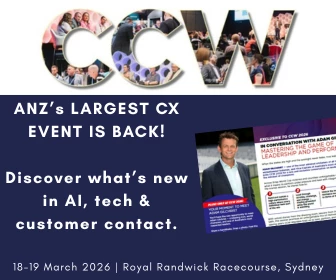2016 Is Here: 4 Ways To Reduce Effort & Enhance The Customer Experience
Add bookmarkThe contact center community has spent the past few years fleshing out the new customer experience normal.
It has adopted the doctrine of customer-centricity as its guiding vision. It has recognized – and embraced – the omni-channel revolution. It has accepted "customer effort" as key performance indicator. It has recognized the role automation plays in both reducing operational costs and driving greater customer satisfaction.
As 2016 arrives, it is time to focus on action. It is time to implement the changes deemed necessary by the marketplace. It is time to reap the rewards associated with an innovative, customer-centric approach to contact center strategy.
To assist with the action, Call Center IQ, Frost & Sullivan and Atento are pleased to present the whitepaper "BPO Trends for Banking & Financial Services Market." Download your free copy.
While the whitepaper tackles specific cases within the finance and outsourcing realms, the lessons are exclusive to neither. The emphasis is instead on optimizing the customer experience. What can your business do to reduce effort, improve operational efficiency, and amplify customer centricity?
Through research-driven guidance and results-minded case studies, the whitepaper will empower your success. As a preview, we highlight four ways to create an enhanced, more effortless customer experience:
Automation
Within a customer experience context, automation tends to refer to the user experience. How can a business leverage IVR technology to optimize the customer journey?
Indeed, contact centers will need to implement enhanced IVR technology. One valuable enhancement is the "visual menu." Instead of relying exclusively on voice or touch tone recognition, such IVR systems leverage visual menus – on websites and smartphones – to more powerfully and accurately guide customers through the journey. Customers embark on a more direct, less taxing route to their desired resolution, while the business benefits from fewer escalations to live calls and a decidedly lesser degree of customer frustration.
Automation can also play a valuable role in optimizing the contact center operation itself. Specifically, automation technology can prioritize and route workflow based on the organizations strengths and weaknesses. From distributing inquiries to the most qualified agents to aligning staffing and scheduling with volume, automation eliminates the humor error – and extensive resources – associated with a manual approach.
Align Front and Back Offices
One of the greatest challenges facing front-line agents is misalignment with the back office. How can agents properly satisfy customers if they have no insight into – let alone control over – how the back office is addressing customer issue and managing customer cases?
This challenge, of course, is also one of the most frustrating. Whereas businesses cannot control for all external factors, they should certainly be able to account for internal ones.
An important step moving forward, therefore, is to align front and back offices. The process begins by optimizing back-office tasks, including through the automation identified in the previous section. Once that has been completed, businesses must integrate back-end systems and workforce management platforms with the omni-channel desktops used by front-line agents. This effectively unifies the contact center around core tasks – front-end and back-end – and thus allows for more operational transparency and more effective workload balancing.
If every employee knows what is happening, every employee can make the best possible contribution to the final outcome.
Digital Data Management
Specifically resonant with financial organizations, the need for improved digital data management is universal.
Digitizing paper-based processes serves as a clear link to an enhanced customer experience. Digitization streamlines operations and provides a better, more vivid, more updated, more searchable window into key organizational data. The result is more efficient workflow – and assurance that any data being communicated to customers is up-to-date and accurate.
The data management imperative also covers customer experience analytics. By creating stronger, more consolidated, more universally accessible databases of product knowledge, customer feedback, customer behavior, and interaction details, agents can better serve customers throughout the journey. They can make more informed decisions – and provide more personalized, more valuable responses – in all touch points.
While security may represent a concern in the immediate term, it actually represents a long-term benefit of digitization. The data is better protected against loss, and access to the data is better controlled.
The Rise of Mobile
In truth, the omni-channel revolution compels organizations to optimize engagement capabilities in all channels.
The mobile channel represents a particularly urgent focus.
Mobile has been a fact of life for several years, and contact centers need to recalibrate in accordance with that reality. This does not simply mean introducing mobile apps and hiring mobile customer service staff members – many are already doing it. It means creating a full-service mobile experience that is wholly faithful to the brand yet wholly tailored to the specific intricacies of the mobile channel – and the way mobile consumes behave.
Completely integrating the mobile channel with the overall contact center experience is the biggest imperative moving forward.
Contact centers should also be leveraging mobile technology inside the contact center and/or service environment. Instead of simply facilitating a response to mobile customers, the best contact centers enable agents – particularly remote or mobile ones - to communicate with customers and fellow agents using their mobile devices.
You’ve accepted the need for an effortless, omni-channel, customer-centric experience. It’s time to focus on delivering one. The aforementioned four steps – and the whitepaper from which they are derived – will play an instrumental role in making that happen.





















